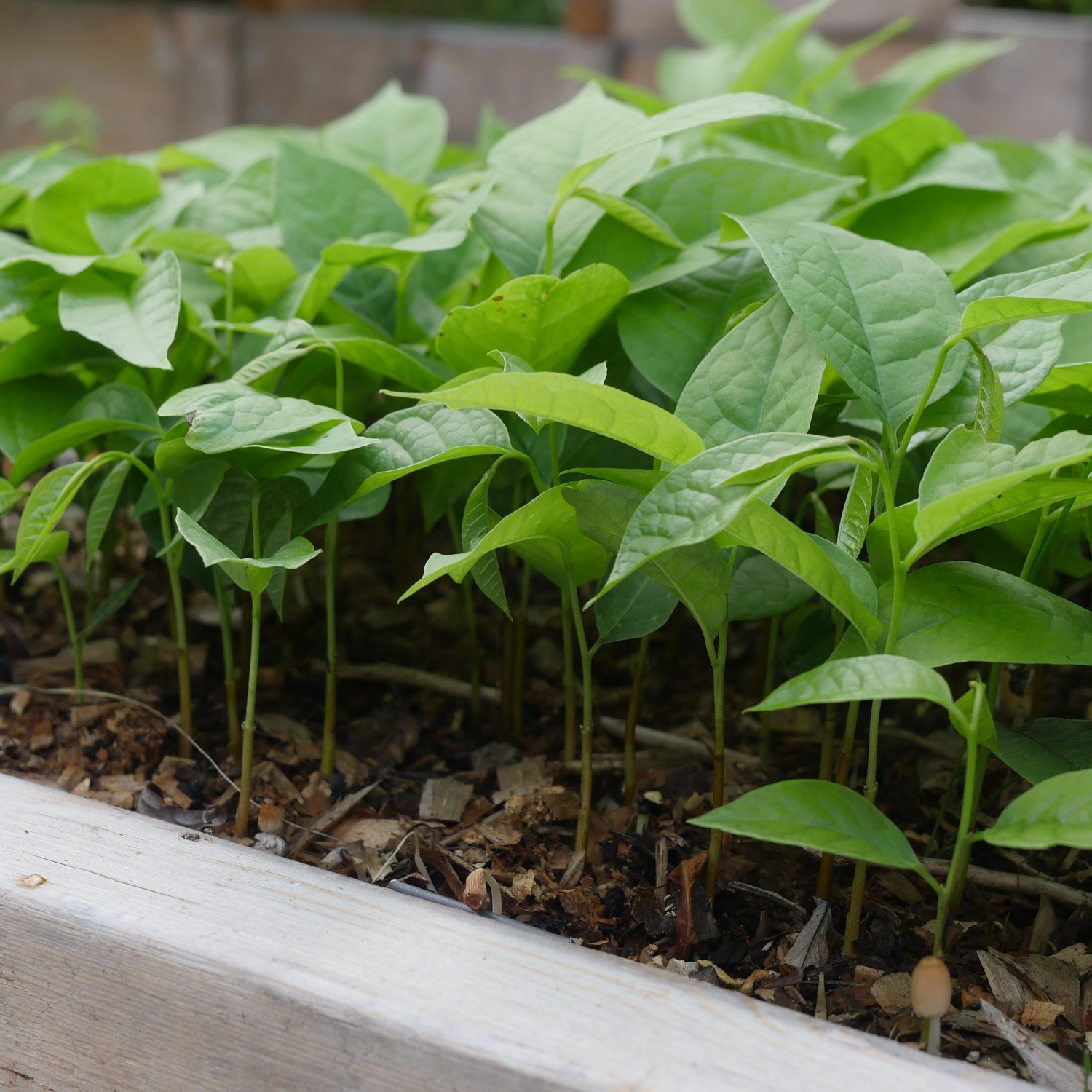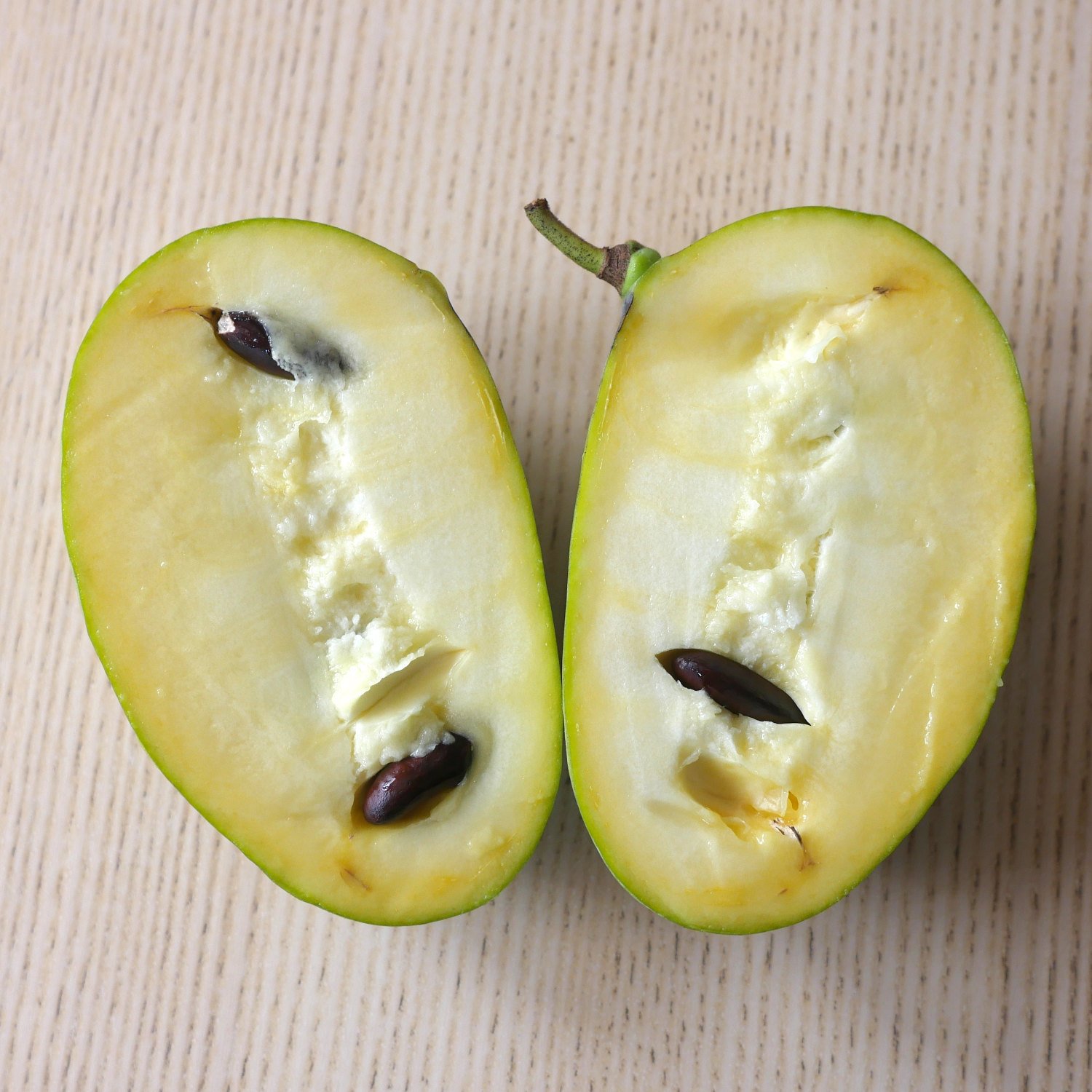Growing Pawpaw from seed
Pawpaw seedlings at Haoma Selections in Dartmouth, Nova Scotia.
The patient gardener’s path to growing the largest North American native fruit.
Pawpaw (Asimina triloba) is North America's largest native fruit, beloved for its creamy tropical flavor that evokes banana, mango, and custard all in one bite. While pawpaw trees can be purchased as young grafted saplings, growing them from seed is an affordable, rewarding process that preserves genetic diversity and allows you to raise trees well-suited to your local conditions. Pawpaws are hardy in USDA zones 5 to 9.
Why grow pawpaw from seed?
Growing pawpaws from seed may take time, but it comes with big benefits:
Resilience: Seedlings are better adapted to local soils and pests.
Diversity: Each tree is genetically unique, which can lead to interesting flavor variations.
Satisfaction: There's something magical about growing a fruit tree from scratch.
Longevity: Pawpaw trees grown from seed can live up to 40 years. Grafted trees are often chosen for their superior fruit quality, but they tend to have shorter lifespans. They usually begin to decline after about 15 years because the graft union can weaken over time, making the tree more susceptible to stress and dieback to the rootstock.
Here’s a step-by-step guide to growing pawpaw from seed:
1. Start with fresh, viable seed
Pawpaw seeds do not tolerate drying. They must be kept moist and viable—preferably straight from a fresh, ripe fruit. If you’re sourcing seeds by mail, make sure they’re shipped damp in a paper towel or peat moss.
Tip: Avoid seeds that have dried out or been frozen or they likely won’t germinate.
2. Cold stratification
Pawpaw seeds need a period of cold dormancy to germinate. This simulates the natural winter they’d experience in the wild.
Refrigerator method: Place moist seeds in a plastic bag with damp peat moss or vermiculite. Keep them at 2–7°C (35–45°F) for 70–100 days.
Outdoor method: Sow seeds in the fall in pots or directly into the ground, and let nature do the work. Protect from rodents with mesh or wire.
Check periodically to ensure seeds don’t dry out or mold.
3. Planting after stratification
Once cold stratification is complete (usually in early spring), sow the seeds in deep containers or nursery beds.
Soil: Use a rich, well-draining potting mix with high organic content.
Depth: Plant seeds 1 inch deep.
Container: Use deep pots (10–18 inches) because pawpaws develop a long taproot early on.
4. Provide warmth and shade
Pawpaw seedlings prefer warm temperatures (24–29°C / 75–85°F) to germinate, and they dislike full sun when young.
Germination time: 2–4 weeks although it may take up to 2 months for the shoot to emerge.
Light: Filtered shade is ideal for the first year. You can use shade cloth or place pots in dappled light.
5. Transplant carefully
After a full growing season or two, you can transplant the young trees to their permanent home.
Timing: Transplant in early spring before leaf-out.
Location: Choose a sunny, well-drained spot. Pawpaws prefer rich, loamy soils.
Spacing: Allow 12–15 feet between trees for good airflow.
To help your pawpaw seedlings thrive, apply mulch around the base of the tree to retain soil moisture and suppress weed growth. Be sure to water regularly, particularly during dry periods, to keep the soil consistently damp. It's also important to protect young trees from wildlife and rodents, which can damage tender stems and roots. Pawpaws are naturally an understory tree but need full sun to fruit well. Growth is slow for the first two years as the root system establishes but it accelerates thereafter.
Tip: If you choose to overwinter them in pots, you will want to move them into an unheated basement or similar location so they don’t freeze. You will have better success this way.
6. Pollination & patience
Pawpaws are not self-pollinating. You need at least two genetically different trees to get fruit.
Pollinators: Their flowers are pollinated by flies and beetles, not bees. You can hand-pollinate for better fruit set.
Time to fruit: Expect your seed-grown pawpaw to bear fruit in 4–8 years.
7. Pruning
Pawpaw trees generally require little pruning, but light shaping can help maintain a healthy structure. The best time to prune is late winter to early spring, while the tree is still dormant.
Focus on removing:
Lower branches
Damaged or diseased wood
Suckers at the base
Branches that are crossing or rubbing
As with most trees, avoid removing more than one-third of the total growth in a single season. Heavy pruning can stress the tree and may reduce fruit production. We recommend early pruning to encourage a strong single-leader structure and to avoid the development of twin trunks or competing main stems.
Looking for
pawpaw seeds?
Join our Haoma Selections newsletter to be first in line for locally adapted pawpaw seeds, available this winter for spring planting.




